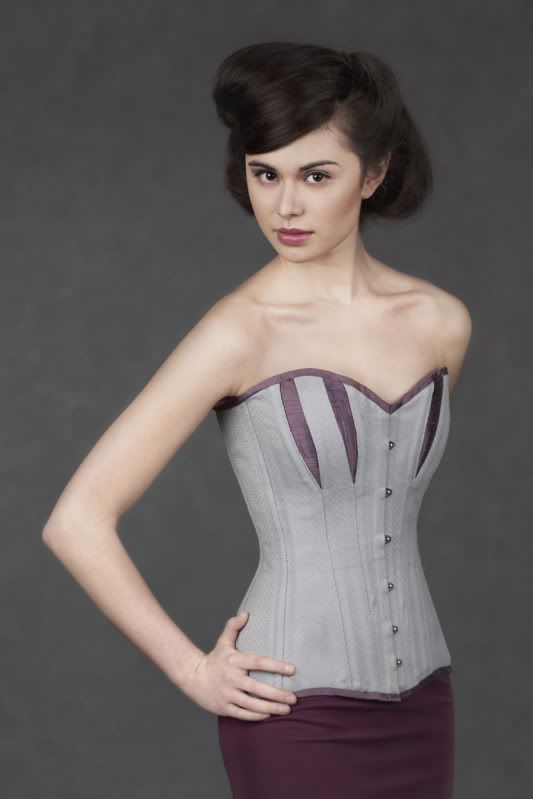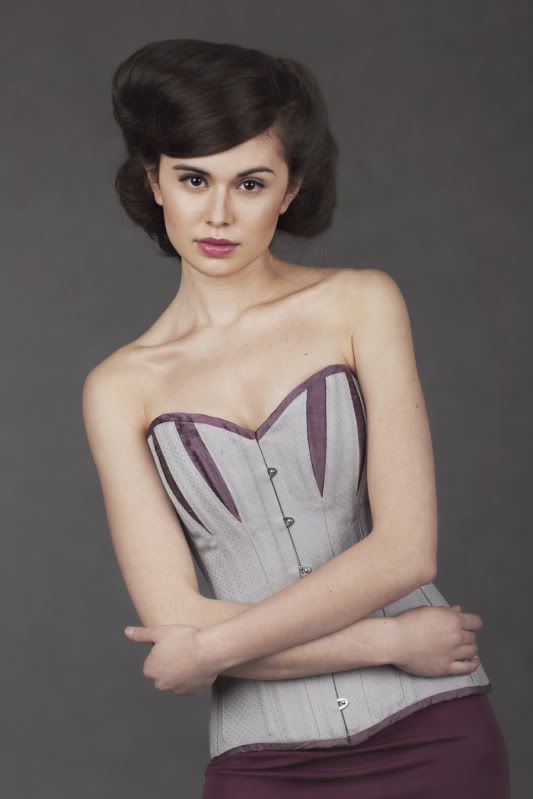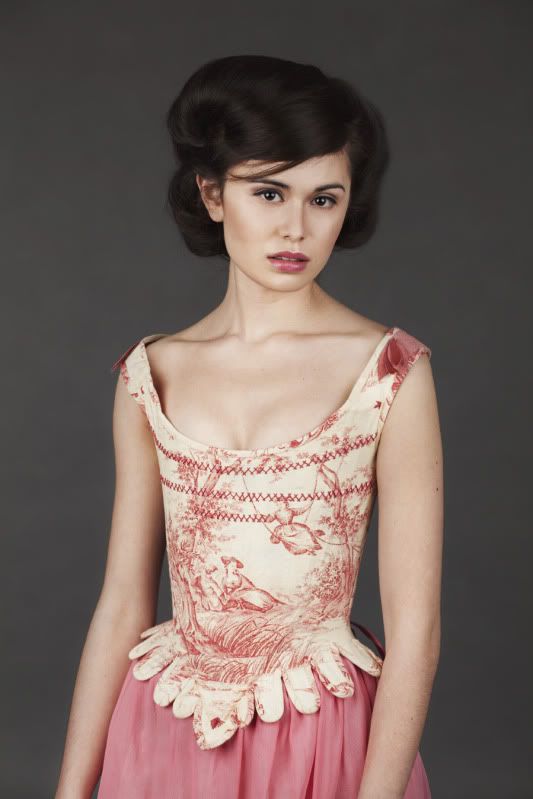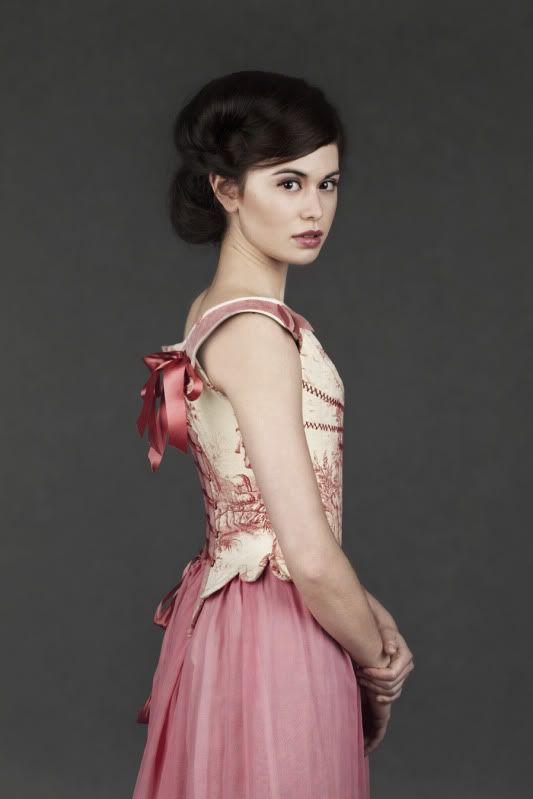So, why go for a corset for under your dress?
Two reasons. Firstly if you require more support or reduction than your average plastic boned basque can offer. Secondly if your dress doesn't have enough structure to achieve the look you want. Those two are not of course mutually exclusive.
The first reason is self-explanatory. Nothing will pull you in or hoist you up as much as a proper steel boned corset made to your measurements. And, although the silhouette achieved with corsetry as opposed to modern underwear is undoubtedly different, the shape varies a great deal with the style chosen. A gored bust can be cut to give you more of a cup shape (as above), or of course you can wear an underbust corset with a bra of your choice.
The other argument given against underwear corsets is bulk. Many outerwear corsets are made with multiple layers and can be substantial garments. However that really isn't necessary. When you study genuine antique corsets what takes you aback at first is how lightweight many are. It is entirely possible to produce a strong yet lighweight corset from a single layer of fabric (although I usually also add a fine cotton lawn lining for comfort) leading to no more bulk than many basque type garments.
The second reason is more aesthetic. For example, there has been a surge in popularity recently for vintage style gowns, particularly 1950s styles. But look at the original gowns and then look at some modern versions - see the difference? The original gowns had either substantial built in corsetry or were worn over powerful underpinnings. Even someone as sylphe-like as Audrey Hepburn had some help to get that firm nipped waist. Many modern dresses lack that structure and that's why the proportions just never look quite so glamourous as their inspiration does. Catherine Middleton's gown, as discussed previously here, is another great example. Have you seen the copies? Do they look the same, even on a model's slender body? No they do not and that's because they lack the considerable structure of the original gown. I know that seems obvious to those of us who are familiar with corsetry and with clothing styles of the past, but if you aren't you might just see that something is not quite right but not know quite what.
So what now?
- Decide on your dress. There are some dresses which do have corsetry built in and are unlikely to need an additional corset.
- Check the weight of the fabric, beading etc. Would the bumps of busk studs show through? If so a buskless corset would be best. Is it drapey and clingy, or bias cut? I wouldn't advise a corset for those as they will show no matter what, that's when the decidely unglamourous but smooth Spanx come into their own.
- Pay careful heed to the top line of the dress front and back. Is it particularly low at the back? That can be problematic for a corset, especially if your bust is on the larger side.
Tip: before you go for a corset fitting have someone draw the top edge on your back, or at the very least measure up from your waist at several points and note them down. - Order your corset in plenty of time! You will need your corset before your first dress fitting as corsets alter your shape a LOT, and not just your waist measurement.
- Be prepared for at least one mock-up fitting and at least one fitting in the finished corset. Renowned corsetiere to the stars and the couture houses, Mr Pearl, can require up to 12 fittings!
- Try to schedule your fittings for about the same time in the month as your wedding. Our figures can change dramatically throughout our cycles, with bust sizes often altering by a cup-size.
- Tell your corsetiere everything. What your dress is like (take pictures if you can); where you feel you need figure help; what extras you need (modesty panel, loops for suspenders etc); what image you have in your head.
- Remember there are possibilities beyond the sample you've seen. You could have straps, or trim, all sorts of things. Just ask your corsetiere.
- Take a bridesmaid or your mum along to a fitting so they can be shown how to lace you up. Your wedding day when everyone is nervous and has had their nails done is not the time to be getting flustered trying to figure out corset lacing.
- Very important - eat before a corset fitting. Nothing too heavy or too soon before the fitting, but a light snack so there's no danger of you fainting. Gassy liquids aren't recommended though when you wear a corset (although don't worry, I think you can be allowed some champagne).
- Be realistic. We can work near miracles but we have our limits. For instance, if your lower tummy is an area you're unhappy with then we can curve the corset in to flatter and hold your tummy in but there's only so low the corset can go and leave you mobile and able to sit down! A stretchy suspender belt is a good option to smooth you below the corset line. Tell your corsetmaker, she may have suggestions.
- Above all enjoy it! Having a bespoke garment created for you is a very special experience and one you're paying for. And don't be shy, your corsetmaker isn't looking at 'you' when she's fitting you, she's looking at the corset on you and how it's behaving. So have fun, relish the chance to see a craftsperson at work, take the opportunity to indulge your notion for lace or your hankering for embroidery. This is a special garment for a special day so savour it.
I hope that's helped some of you. Personally I love working with brides, I love getting a little share of their excitement, and seeing someone's figure worries vanish because of something I've made is truly the best reward there is.








